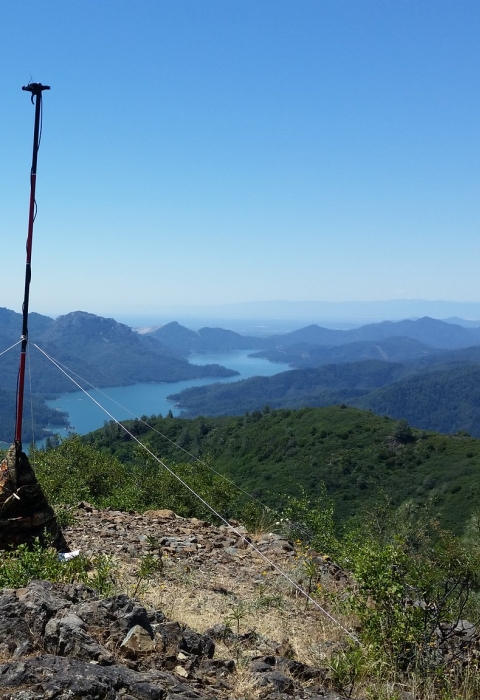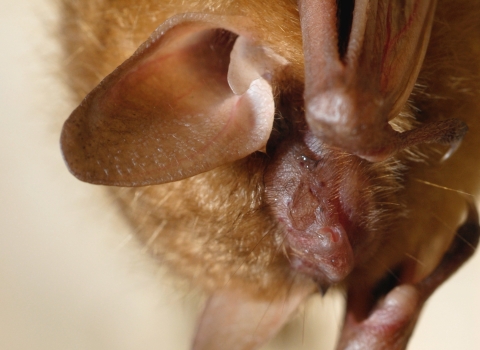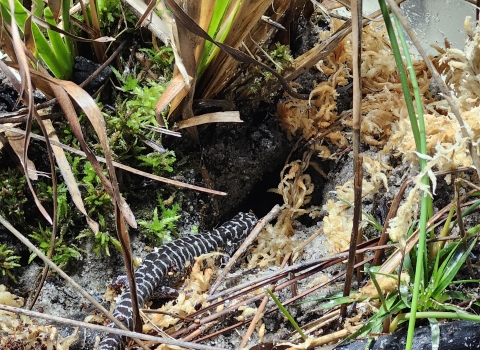Reston, Va. — The U.S. Fish and Wildlife Service and U.S. Geological Survey have signed a memorandum of understanding formalizing their joint leadership of the North American Bat Monitoring Program (NABat), a collaborative partnership focused on advancing bat conservation across North America.
As co-leads of the NABat program, the two federal agencies will work to ensure the program remains sustainable and meets the needs of partners by providing coordination, technical assistance, data products and analyses that make it easier to apply bat monitoring data more effectively in support of conservation.
NABat was born out of the urgent need to monitor bat populations following the emergence of white-nose syndrome, a disease of hibernating bat species that appeared in New York in 2007 and has since spread across the continent. White-nose syndrome is considered one of the worst wildlife diseases in modern times, resulting in the loss of millions of bats across North America.
In addition to white-nose syndrome, both hibernating and non-hibernating bat species are impacted by climate change climate change
Climate change includes both global warming driven by human-induced emissions of greenhouse gases and the resulting large-scale shifts in weather patterns. Though there have been previous periods of climatic change, since the mid-20th century humans have had an unprecedented impact on Earth's climate system and caused change on a global scale.
Learn more about climate change , wind-energy development, and habitat loss and fragmentation. To address these challenges, NABat leverages a collaborative network of more than 300 partnering organizations to better understand bat population dynamics, distributions and resiliency for all 48 species that occur in the U.S. and Canada.
The multinational NABat program improves bat conservation efforts by increasing collaboration, standardizing data collection, and making this information more accessible. Since its launch in 2015, NABat has consolidated nearly 94 million records from 49 states, 9 Canadian provinces, and 20 Tribal organizations to monitor changes in North American bat populations.
This information is critical for conservation of these species.
Bats are a highly mobile and mysterious group of animals whose complex life histories and behaviors make them difficult to observe. NABat capitalizes on contributions from this network of partners in the U.S. and Canada who use standardized methods to gather information through a variety of techniques such as acoustic monitoring and surveys. By coordinating bat monitoring efforts and developing robust analyses, NABat aids wildlife biologists and land and natural resource managers to understand the impacts of threats and the benefits of conservation efforts at local, regional and range-wide scales.
This announcement comes as the Endangered Species Act (ESA) celebrates 50 years and the U.S. Department of the Interior is highlighting the ESA's importance in preventing extinctions, promoting the recovery of wildlife and conserving the habitats upon which they depend. The ESA has been highly effective and is credited with saving 99% of listed species from extinction thanks to the collaborative actions of Tribes, federal agencies, state and local governments, conservation organizations and private landowners.
For more information about the North American Bat Monitoring Program and opportunities to participate, please visit https://www.nabatmonitoring.org/.






